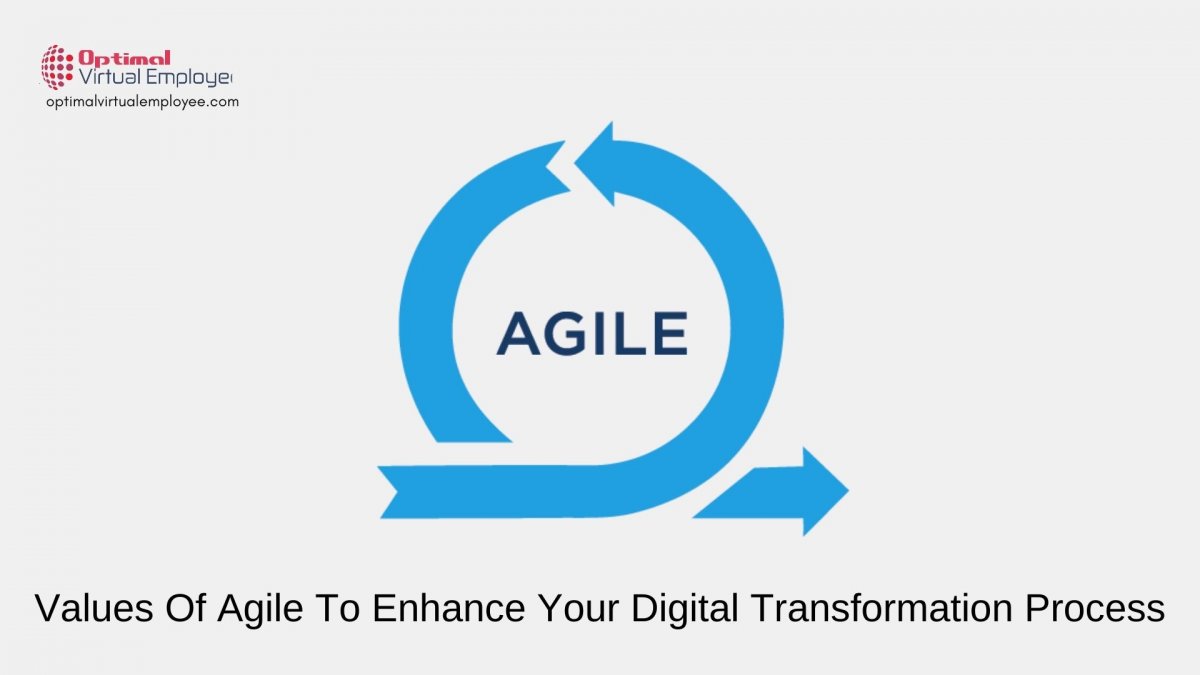The digital transformation process often disrupts the functioning of multiple systems and departments in an organization. Taking the agile route for such digital transformation is often in the interest of all stakeholders. Agile is a project management methodology that breaks down the transformation process into small, interactive, doable phases, often called sprints. The foundational belief is that the transformation’s actual needs and end goals may change throughout the process itself.
By the book, Agile methodology is based on these four key values:
- Individuals and interactions over processes and tools
- Progress over perfection
- Customer collaboration over negotiation
- Adapting to change over following plans
Hire Agile Software developers to kick-start your digital transformation process.
Agile Inspired Digital Transformation Process
-
Create Value Continuously
Sometimes, businesses get so blindsided by costs and the set milestones that they overlook the importance of value creation. The main focus should be value creation for the staff and other stakeholders. Digital transformation teams that pledge to cater to the needs of the staff end up prioritizing high-value tasks, thus delivering them early on during the project lifecycle and then successfully improving on them through feedback and monitoring. Thanks to early and continuous value creation, organizations do not waste away mammoth budgets trying to build unproven solutions.
-
Iterative Approach
Given the pace at which markets and buyers evolve, forecasts and projections are hard to stick to. The digital landscape is fast-paced, to say the least; amidst the chaos, taking an interactive approach is in the business’s best interest. Businesses with a long-term perspective should make short-term plans based on their expertise and work on projects, keeping scope for adapting to emerging trends and navigating through unforeseen hindrances.
-
Sustainable Pace
Agile methodologies support the idea of working iterative sprints that demonstrate value and return on investments easily. Not only it contributes to confidence-building, but it also lets everyone catch up with continuous learning and improvements. It’s common for the work cycle to feature-heavy based approach, and the continual cycle of buy-in from the team can prevent burn-out.
-
Change During the End Phase
A consistent feedback loop can help complex transformation processes and the change they bring along. The iterative style of working, the sprints makes it simple to stick to changes and accept feedback. Being open to changes even during the end phase keeps the teams and stakeholders engaged in the process. It also brings forth continuous improvements in the digital transformation process.
-
Diversified Teams
A digital transformation team should feature skilled representatives from all departments of an organization. Different perspectives minimize the chance of organizational silos that distress the progress effort. The involvement of a diversified team helps formulate a strategy and leveraging agile principles align such teams, mitigate confusion and adapt well to constantly evolving situations.
Agile Digital Transformation Best Practices
Adopting Agile for digital transformation is not as simple as it sounds. It changes everything right from how teams work, how the work culture is, and the outcomes. There are certain best practices that businesses must implement to get the best out of Agile:
-
The Right Kind of Work Environment
It’s common for Agile teams to be spread geographically. Businesses must ensure to curate the right kind of work environment to facilitate the healthy sharing of information. For example, a team burndown chart can track the workflows and provide necessary projections about the outcomes.
-
Frameworks for Scaling
Sometimes organizations implement Agile in a certain area of their processes. It may be difficult to execute small-scale teams when the transformation is function-specific and not organization-wide. In such cases, using frameworks like SAFe Agile frameworks, the Nexus framework, and the Large Scale Scrum (LeSS) make the scaling effort easier.
-
Seek Help
Agile poses several challenges for businesses. Seeking help from Agile coaches, highly skilled Scrum masters and other partners who are well-versed with this methodology can scale the processes. Sharing knowledge and other best practices will streamline its implementation in digital transformation.
In the End
Modern product portfolios have transitioned to mobile apps. It is the need of the hour for companies to sway away customers with innovations in the digital space. ‘Good enough is just not catchy enough when it comes to the digital world. Exciting and highly personalized seem the buzzwords that drive engagement.
Adapting to the four aligned principles helps initiate continuous innovation during the digital transformation. A radical change in business models through calculated steps depending on the timing and resources stir up optimal results. Thanks to agile, organizations can launch and learn productive and adaptable initiatives simultaneously. The way these initiatives react to changing market conditions and customer’s needs set them up for success.
Syncing in an agile way of incorporating digital transformation requires reorienting business processes, using the latest technologies to enable business success. The Agile approach simplifies transformation. It is a stable framework to enable change in the organization and welcome the gen-X of digital experiences.









